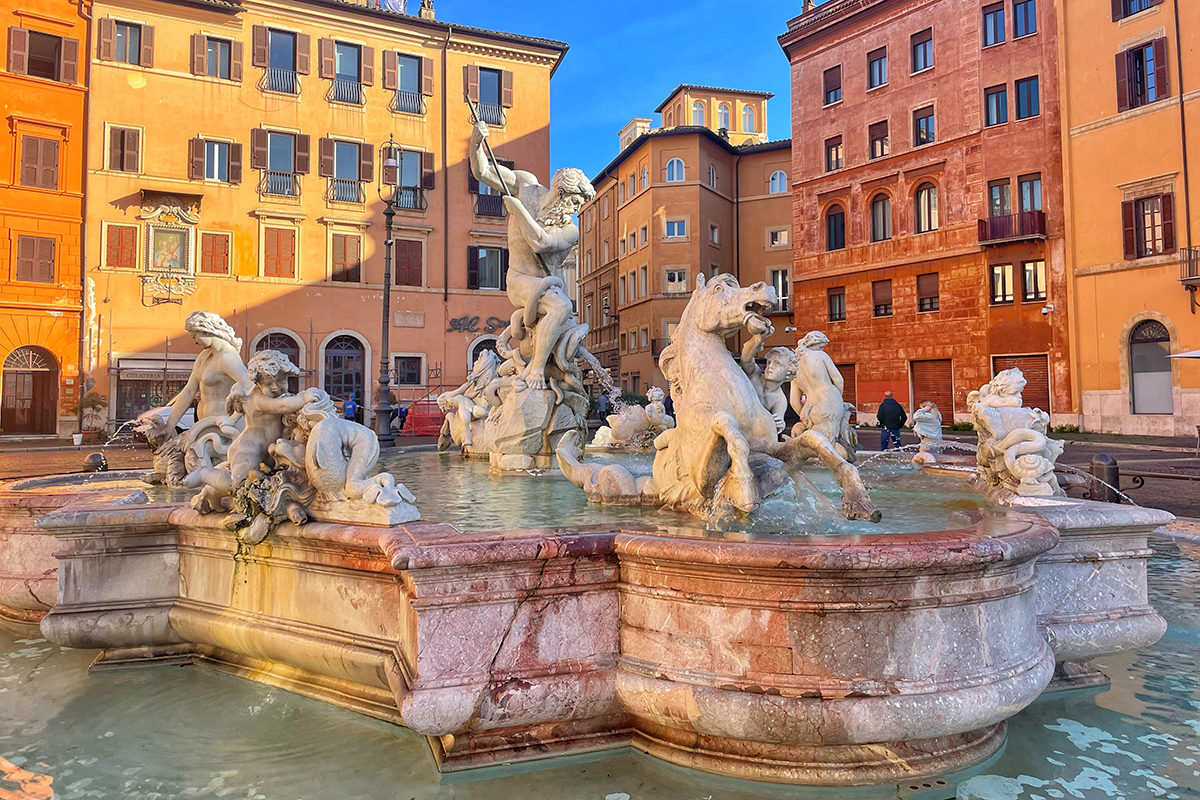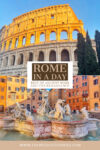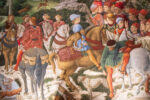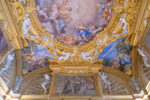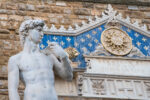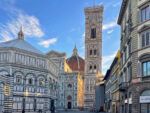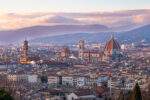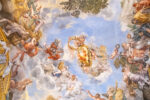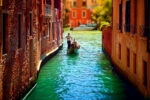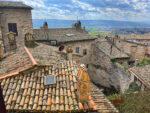Rome was not built in a day, but… with sufficient planning, you can see the highlights of the eternal city in one day. Even better, you can see two cities and two countries in Rome in a day since the Vatican is an independent city-state. So whether you have two days or two weeks in Italy, make sure to leave time for Rome.
This Rome in a Day itinerary focuses on two key areas of Rome: the heart of Ancient Rome for its extraordinary architecture and the Vatican for its spellbinding Renaissance art. What I am offering you is a journey from the Colosseum to the Sistine Chapel via the most beautiful fountains in Rome.
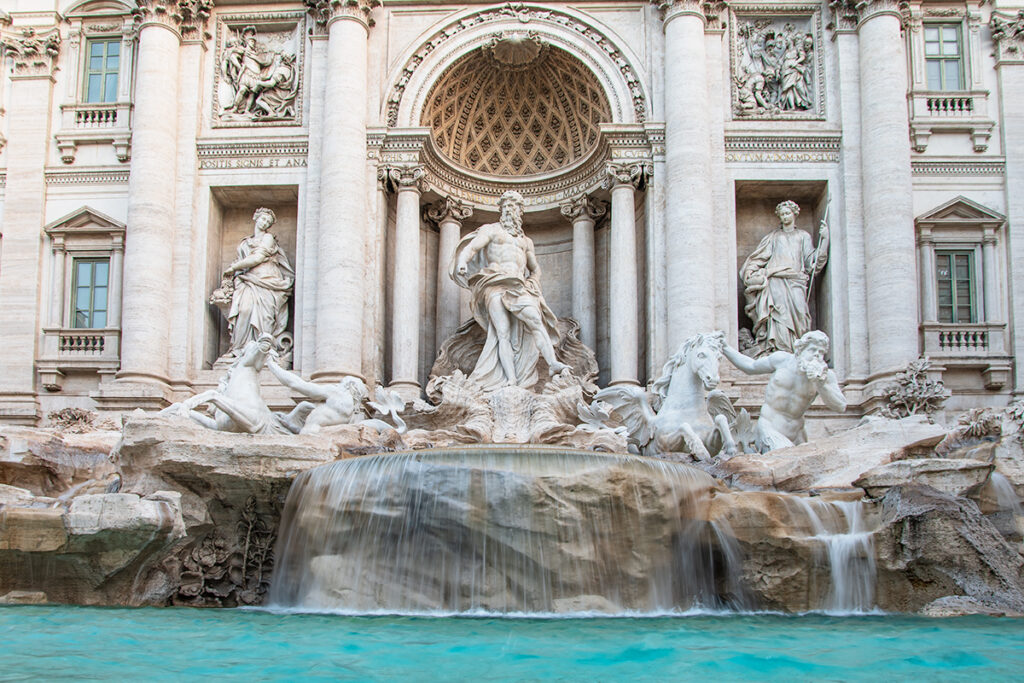
It may feel impossible to see it all in one day, especially if you are not familiar with the city. But the trick is to plan a mix of guided tours and independent exploration. I recommend a 9 am guided tour of the Colosseum, Palatine Hill, and the Roman Forum, and after hours tour of the Vatican Museums. The perks are that you’ll skip all the incredibly confusing queues at the Colosseum and the Vatican, learn as much as you want about these vast and complex monuments, and, most importantly, keep to the schedule.
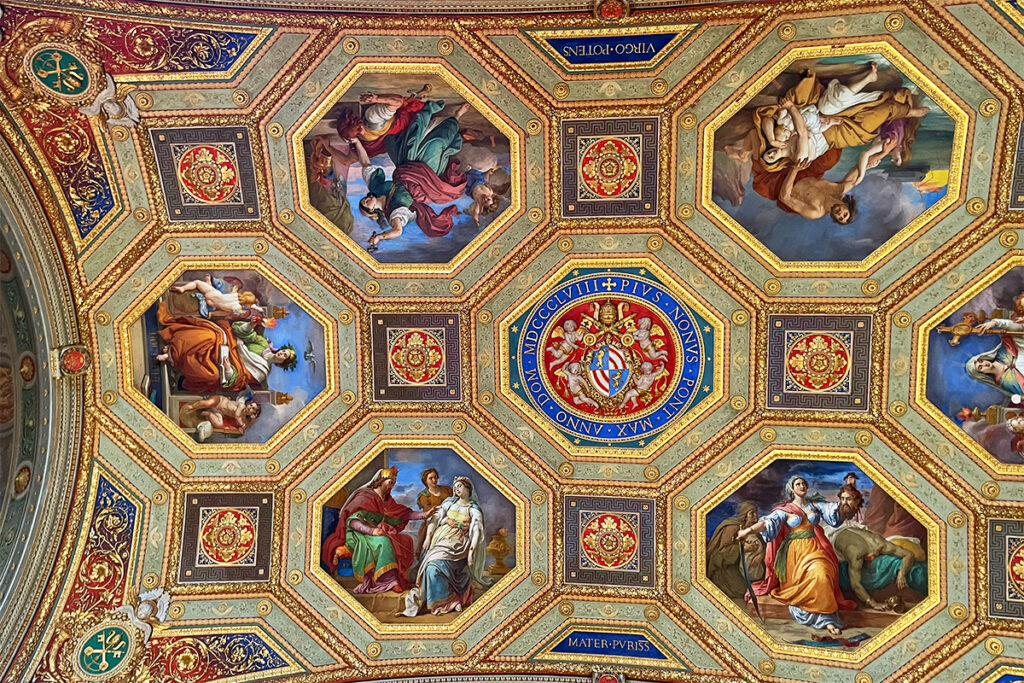
Here is what you can see in Rome in a day by following the itinerary laid out below:
- Colosseum
- Palatine Hill
- Roman Forum
- Imperial Fora
- Trevi Fountain
- Pantheon
- Optional: Inside the Pantheon
- Elephant Obelisk
- Plaza Navona Fountains
- Optional: Pinacoteca Vaticana
- The Vatican Museums
As you can see, the itinerary is quite packed. There are enough things to do in this itinerary to fill a weekend. But I’ve done this itinerary on my first day in Rome as a crash course on Rome’s attractions. By the end of the day, I felt like I had spent a week in the city.
If you want to slow things down, you can skip anything you like on the way from the Colosseum to the Vatican and simply catch an Uber to the Vatican. You can book both taxi and Uber through the Uber app in Rome.
If you want to fit in a visit to St Peter’s Basilica in your one day in Rome, you can do this itinerary in reverse and start with the early-bird tour of the Vatican Museums. After the tour, you can access St Peter’s from the museum and avoid queueing up for hours at the main entrance.
The Colosseum
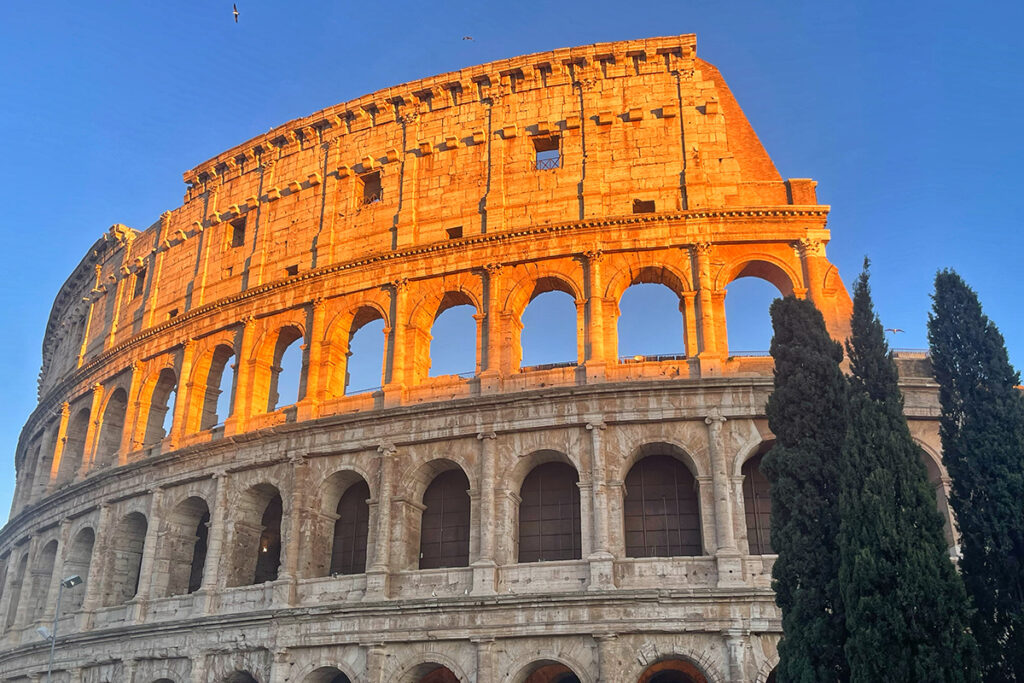
In its day, the Colosseum was known as the Flavian Amphitheater and it was a wonder of the world. Visitors to Rome would’ve gaped at it in reverent awe of Rome’s might. Its main purpose was to generate public approval of the Emperor and the ruling elite.
The Amphitheater had the capacity to fit 50,000 seated spectators, plus standing room for another 20,000. And the gory entertainment of gladiator fights was free for the masses.
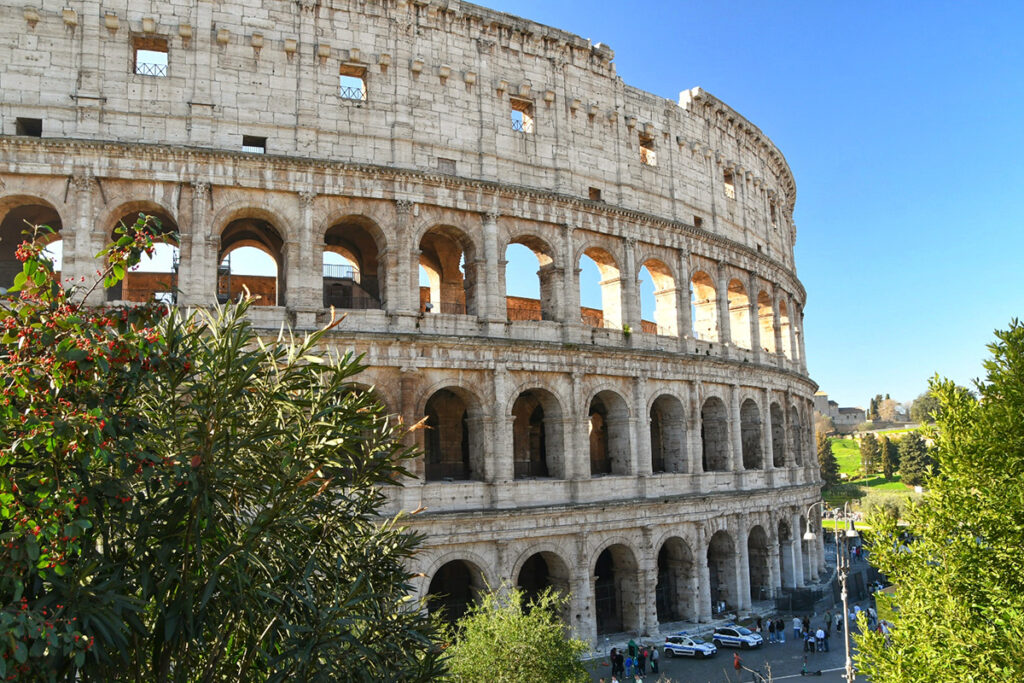
The massive entry arches around the perimeter of the Colosseum enabled all 70,000 people to file in and out of the venue in as little as 15 minutes. If you look up at the top of the arches while you are queuing up for entry, you’ll see Roman numerals chiselled on each arch that would’ve corresponded to the number on the entry ticket. So everyone knew exactly where to enter to access their seats.
This level of organisation is all the more amazing after the chaos of entering the Colosseum today.
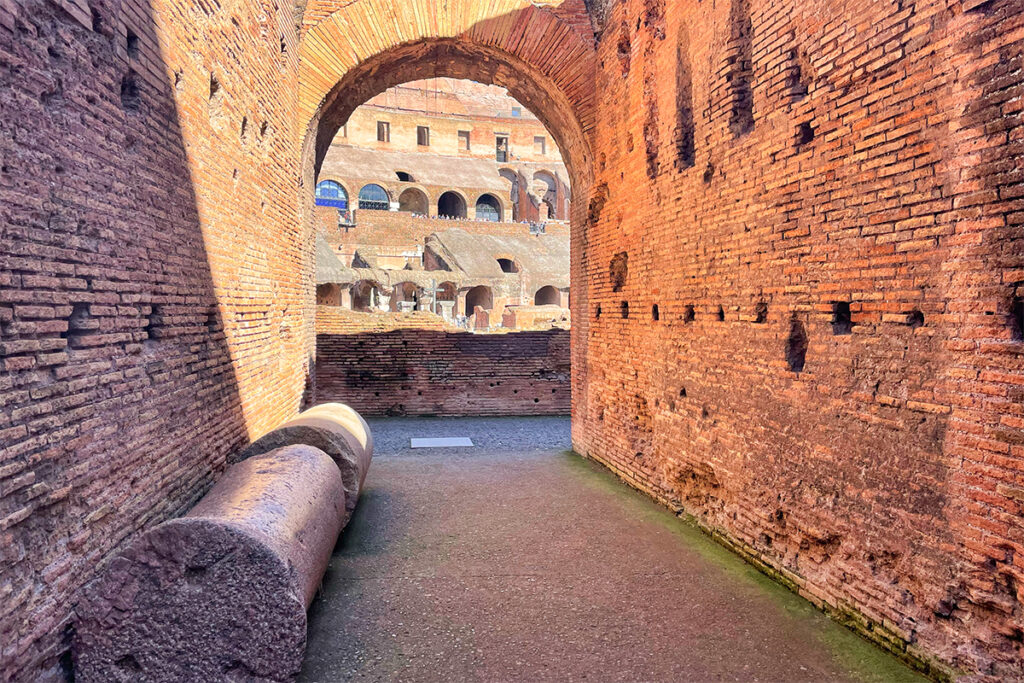
Inside, the Colosseum is not as impressive as on the outside – the benches didn’t survive 2,000 years as well as the walls. But there are plenty of nooks and crannies to explore on the two levels, and you get some fantastic views over the Roman Forum and the Arch of Constantine from the top.
The Arch of Constantine
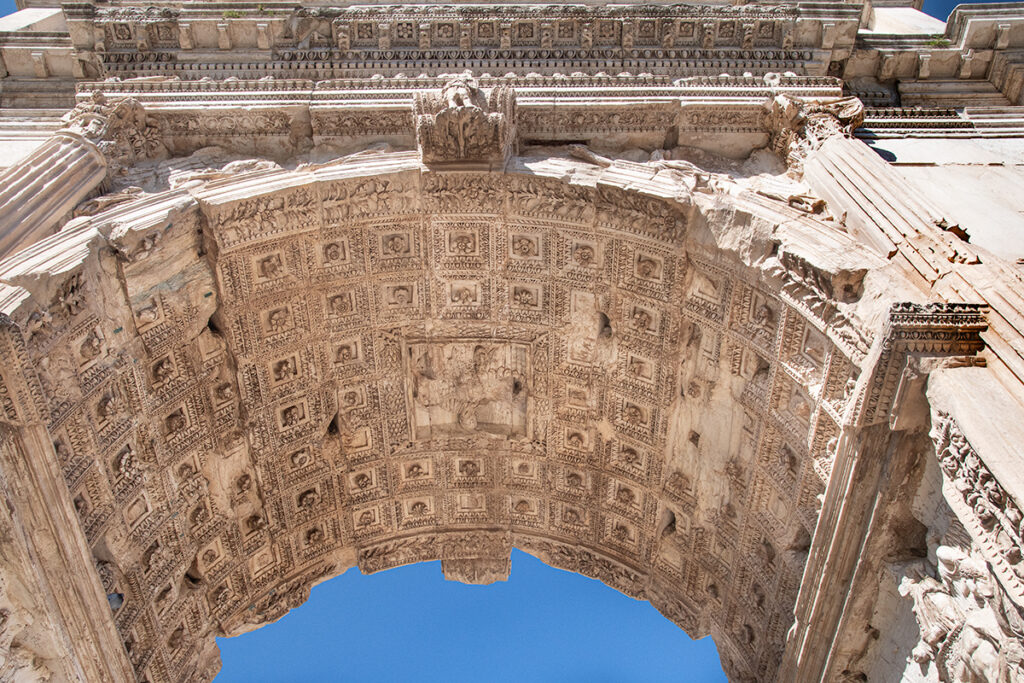
Lying between the Colosseum and the Palatine Hill the triumphal Arch of Constantine commemorates the battle that won Constantine the title of the Roman Emperor. Even though Constantine moved the capital of the Roman Empire to Constantinople, his arch towers over the Via Triumphalis, the road taken by the victorious generals when they returned to the city from their conquests.
Palatine Hill
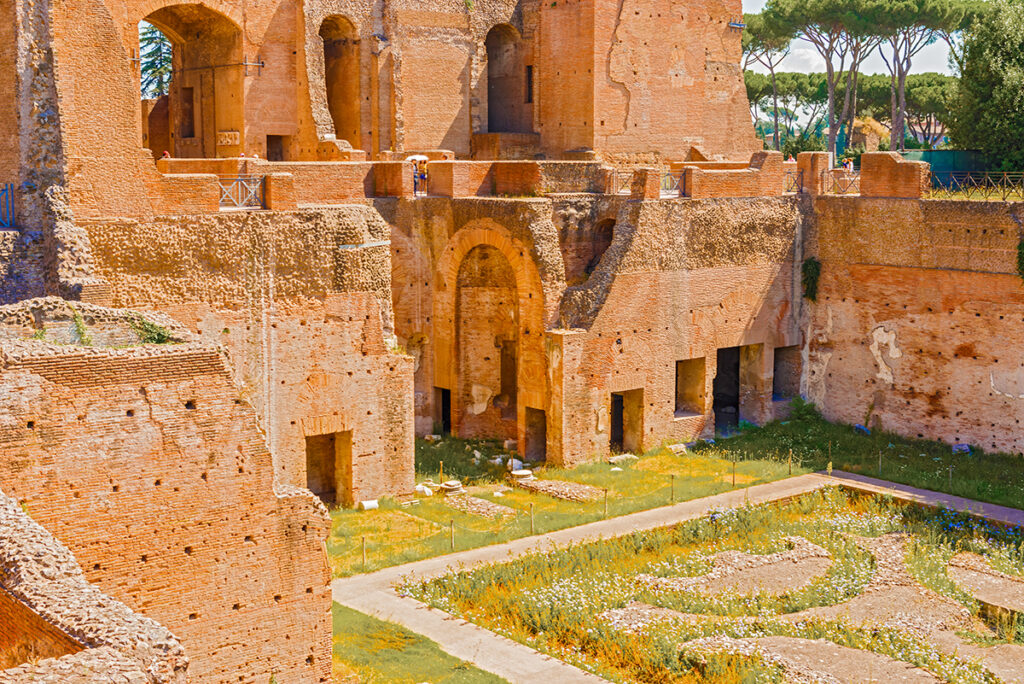
Palatine Hill is the birthplace of Roman Civilization and the place of legends. One legend has it that the cave where Romulus and Remus were found and raised by the she-wolf was located on this hill. Another is that Hercules defeated the monster Cacus here. The later legend is immortalized by a famous statue that stands at the entrance to Palazzo Vecchio in Florence.
As Rome grew into a city and then an Empire, Palatine Hill became the residence of kings and emperors. Today you can find remnants of the Imperial Palace of Domitian including Domus Flavia, the Domus Augustana, as well as the Baths of Septimius Severus, and Circus Maximus.
The view from the hill sweeps over the Roman Forum and as you gaze at the mammoth remnants of the forum, keep in mind that until a century ago, most of these structures, the entire forum, were buried under layers of debris and several meters of earth.
Roman Forum
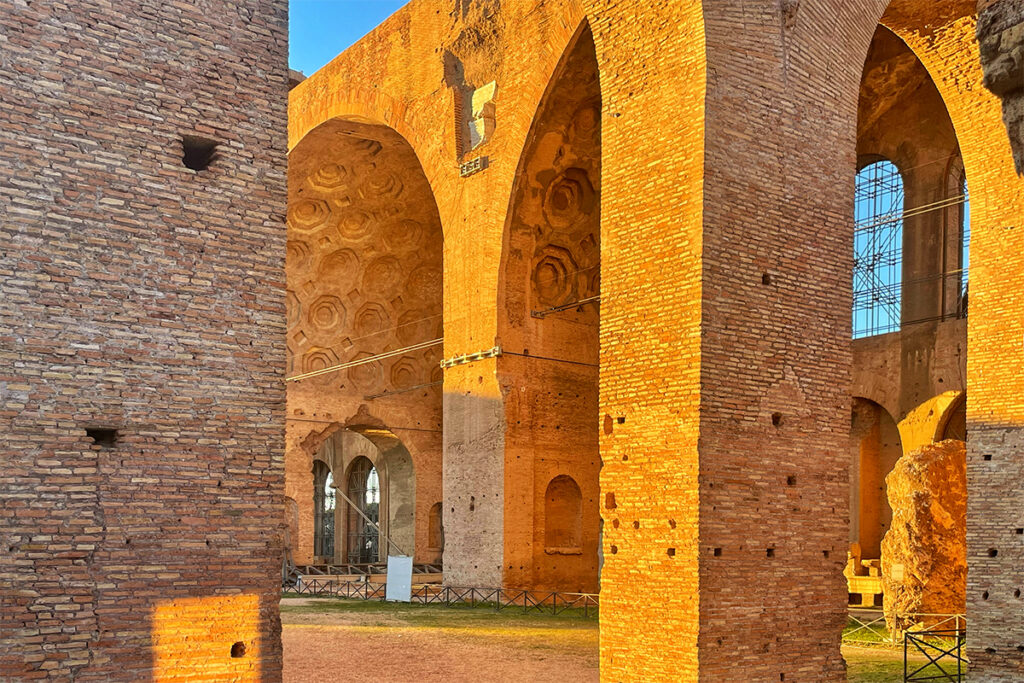
Starting from the time of Ancient Rome, around the 8 century BC the Forum was the centre of day-to-day life in Rome with public spaces, temples and government buildings. There were so many monumental buildings here, that today it’s practically impossible to imagine what the forum looked like in its day. Here’s a reproduction of the Forum from the times of the Roman Empire to help your imagination.
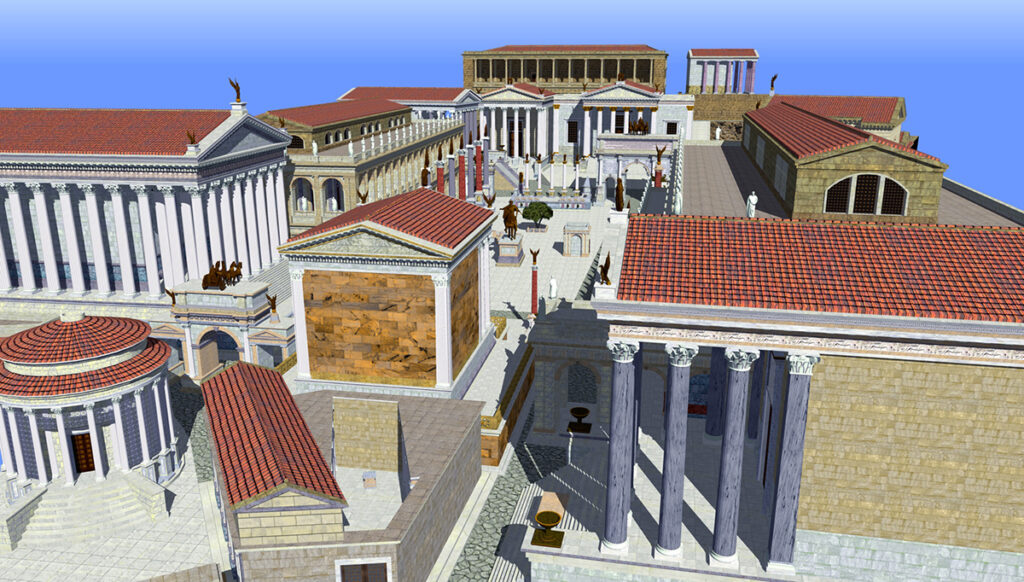
The Forum was re-shaped by successive generations who added more temples and buildings to the square. The last monument, the Basilica of Maxentius was built in 312 AD during the reign of Constantine the Great, about two centuries before the fall of the Western Roman Empire.
Imperial Fora
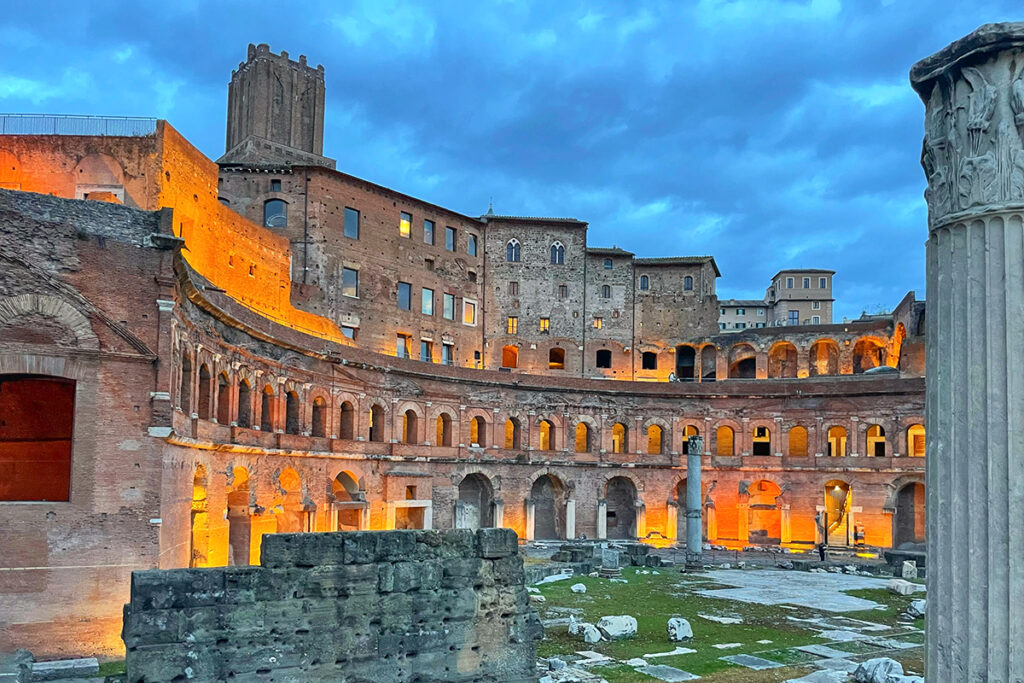
The most scenic way to leave the Colosseum & the Roman Forum is by strolling along via dei Fori Imperiali or Street of the Imperial Fora.
This street is lined with the monumental remnants of the Imperial Fora built by successive emperors since the time of Julius Caesar. The street runs through the middle of the site.
One of the best-preserved areas is Trajan’s Market, which formed an integral part of the now-gone Trajan Forum. If you have the time, you can access the site and go for a stroll in the ancient Roman shopping centre.
Alternatively, you can admire the sight of the fora as you make your way along via dei Fori Imperiali. Each forum has signage along the street with images showing what the buildings looked like at the time of the Roman Empire.
Walk Through the Historic Center of Rome
If you explored the Colosseum, the Palatine Hill, and the Roman Forum on a 9 am tour, and then walked towards the historic centre of Rome via dei Fori Imperiali, you should find yourself at Piazza Venezia by about 12.30 pm.
From here, it is about a 45-minute walk to the Vatican Museums where you will end your day. But since you have quite a bit of time, let’s make the walk a little longer and a lot more interesting.
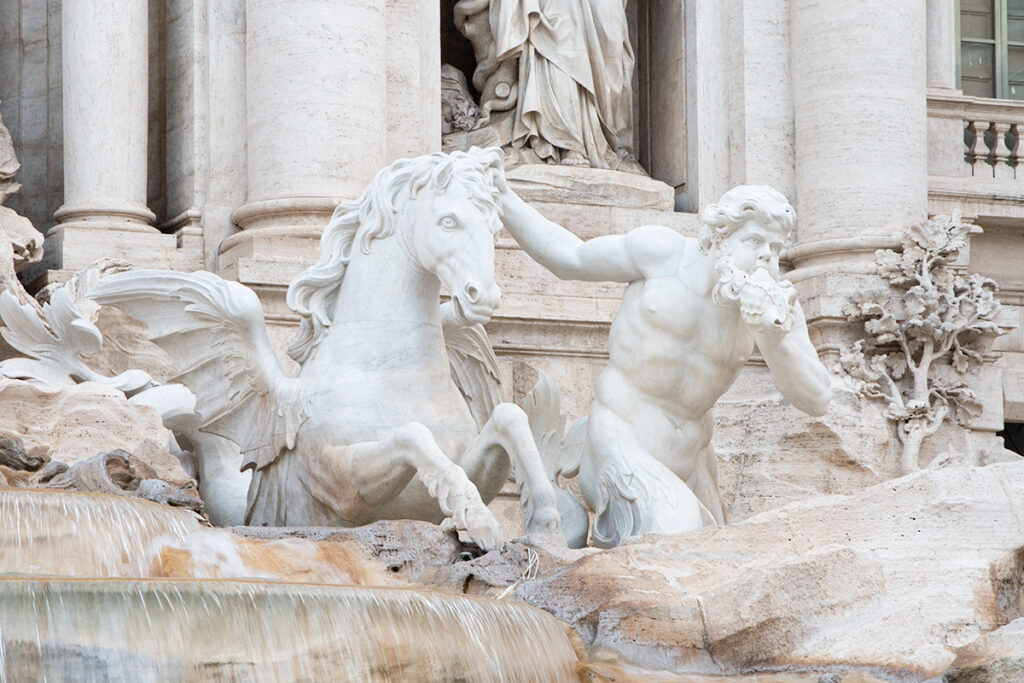
Depending on whether you decide to visit the Vatican Museums on a late afternoon tour that starts at 3.45 pm or on a night tour that starts at 7 pm (more details in the Vatican section below), you have a few hours to explore some of Rome’s iconic sites as you walk towards the Vatican.
The suggestions below are aimed at getting you to the Vatican in time for the 3.45 pm tour. But I also give you optional detours if you don’t have to be at the Vatican until 7 pm.
Trevi Fountain
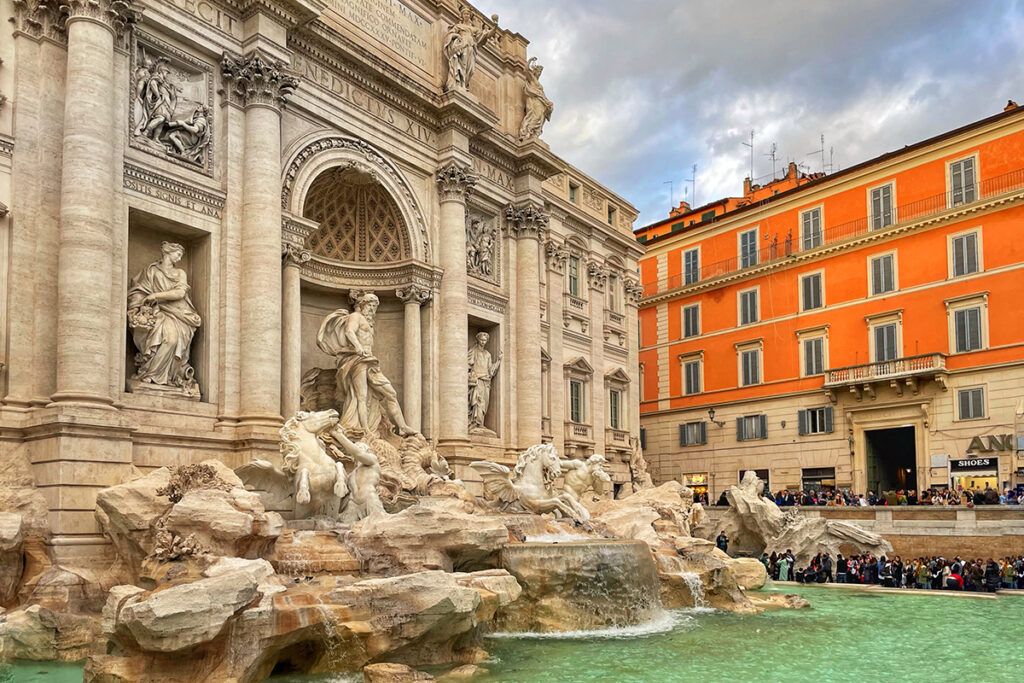
Roman summers are very hot and muggy, so it’s not surprising that Romans have always loved their fountains. And in a city as aesthetically minded as Rome, fountains become masterpieces of public art.
Rome’s most famous fountain is the magnificent 26-meter-high and 49-meter-wide Trevi fountain. As an iconic site and a free public attraction, Trevi Fountain is always busy. Even at 6.30 in the morning it is buzzing with tourists and an occasional wedding photoshoot.
But don’t worry. The fountain is raised so you can see it from anywhere in the square. And it’s not too difficult to weave your way through the crowds for a closer look.
Trevi fountain was built on the former site of Roman baths that were fed by an underground aqueduct. In the days of Roman conquests, young men would visit the baths before going off to battle. And they would throw a coin in the water as a lucky charm for their safe return. This tradition is kept alive by visitors wishing to return to Rome for another vacation.
Pantheon
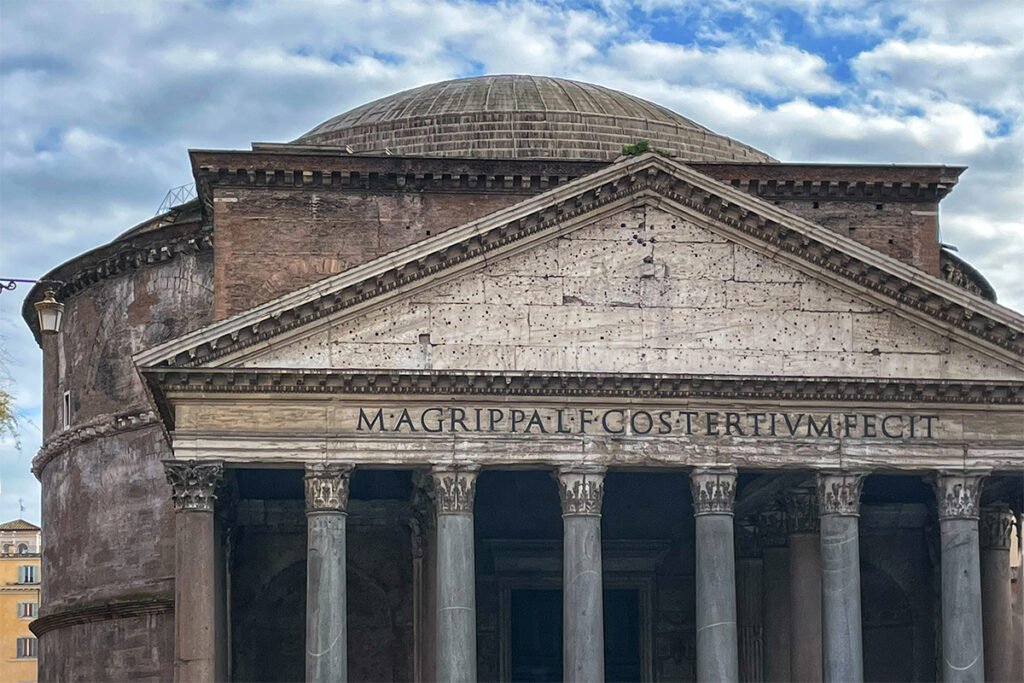
The 2,000-year-old Pantheon or the Temple of All the Gods is one of the best-preserved of all Ancient Roman buildings in the world. Largely because it was converted to a church in 609 AD, five centuries after it was built.
The building is an architectural marvel. It is 43 meters tall and 43 meters wide. Its dome is a perfect hemisphere and until modern times it was the biggest concrete dome ever built. In fact, it is still the world’s largest unreinforced dome.
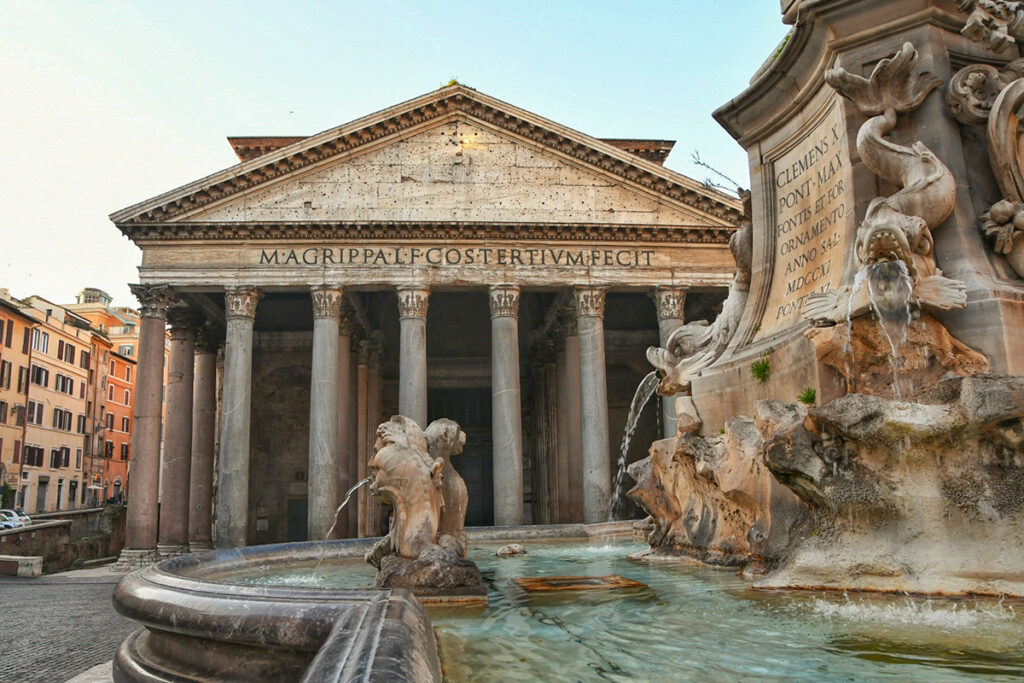
The greatest artists of the Renaissance drew inspiration from the classical proportions of the Pantheon, including Filippo Brunelleschi who modelled his famous dome for the Florence cathedral on the Pantheon’s enormous dome.
Optional: Inside the Pantheon
As impressive as the exterior of the Pantheon is, its interior is one of the few places in Rome where the original marble interior is largely still intact. Plus, you’ll want to see the famous oculus – the round hole at the top of its dome, and the tomb of Rafael – one of the most gifted artists of the Renaissance.
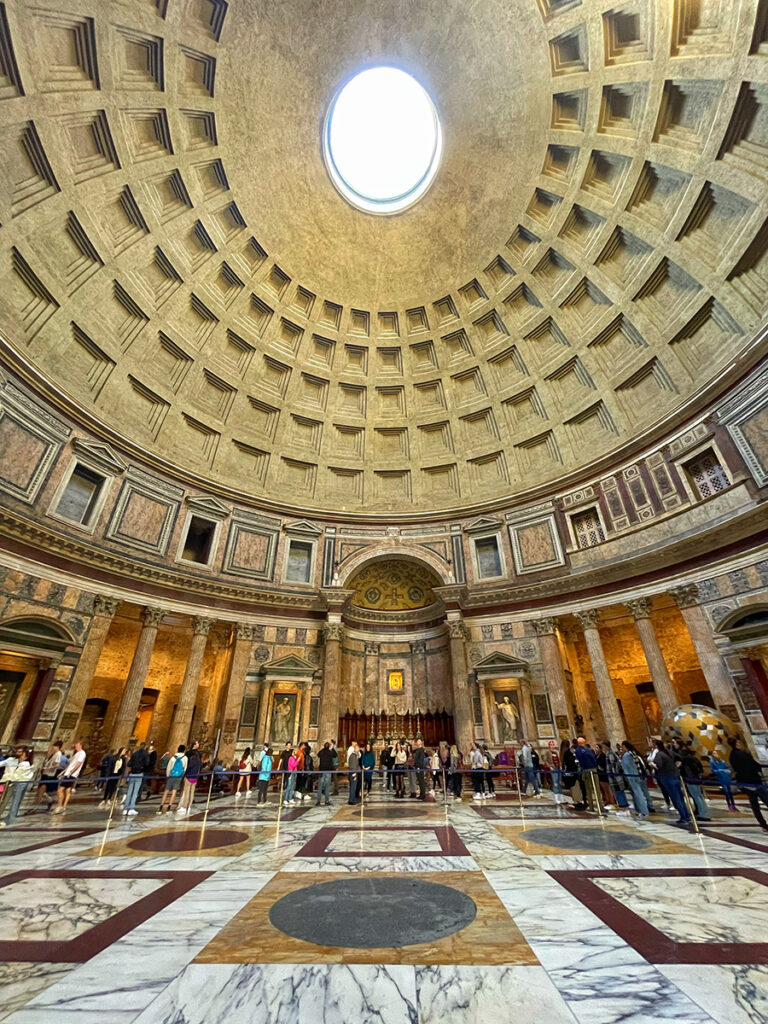
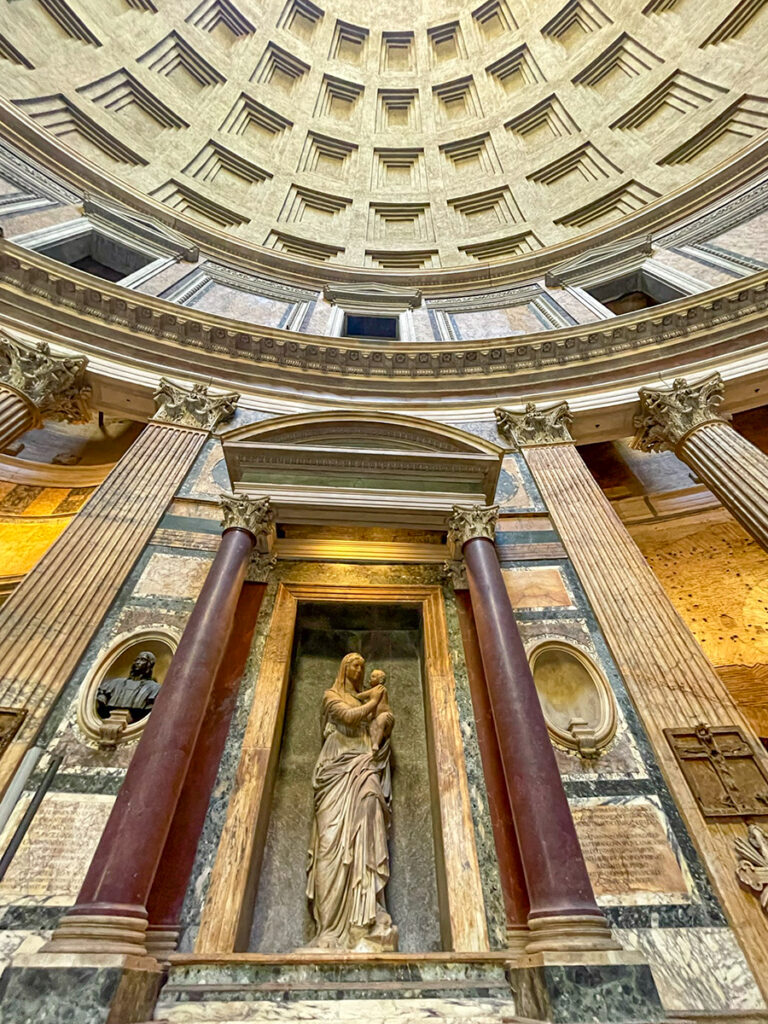
The challenge with visiting the Pantheon is that since it is a church, the entrance is free, which means there are no skip-the-line tickets. Although this is set to change in 2023 and a fee of 5 euros may be introduced.
Until then, the only way to skip the queue is to join an organized tour. The tours are not long, only about 45 min and they are well worth it, especially if time is of the essence.
The square in front of the Pantheon, Piazza della Rotonda, is a good spot for lunch. The prices at the restaurants are reasonable and you get to enjoy one of the most iconic views in Rome, that of the gorgeous marble fountain from the 1500s and the Pantheon itself.
Bernini’s Elephant Obelisk
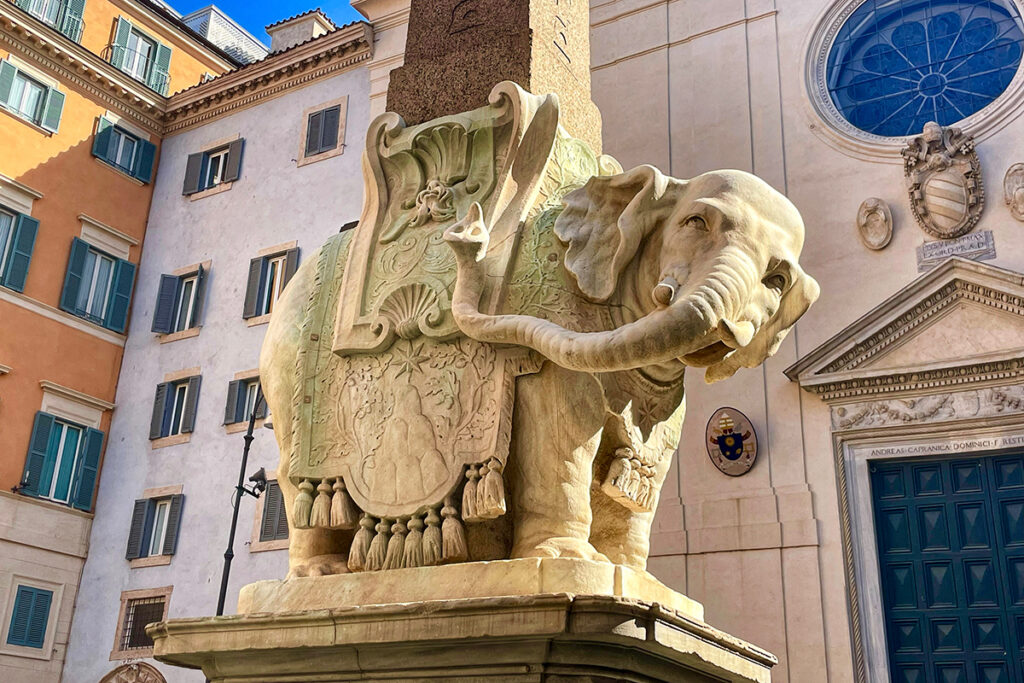
Before you leave the Pantheon area, take a 5-minute detour to see one of Rome’s most unusual sculptures – Bernini’s Elephant and Obelisk. It stands in the small square in front of the church Santa Maria sopra Minerva.
The statue of the Elephant carrying an Obelisk on its back is an unusual sight with an orient flare. The Obelisk is the smallest of 13 Egyptian obelisks in Rome. It was unearthed near the church in the 17th century and probably dates to around 580 BC being carved in Egypt.
Optional: If you have the time, take a peek inside the church of Santa Maria sopra Minerva to see Michelangelo’s statue of The Risen Christ.
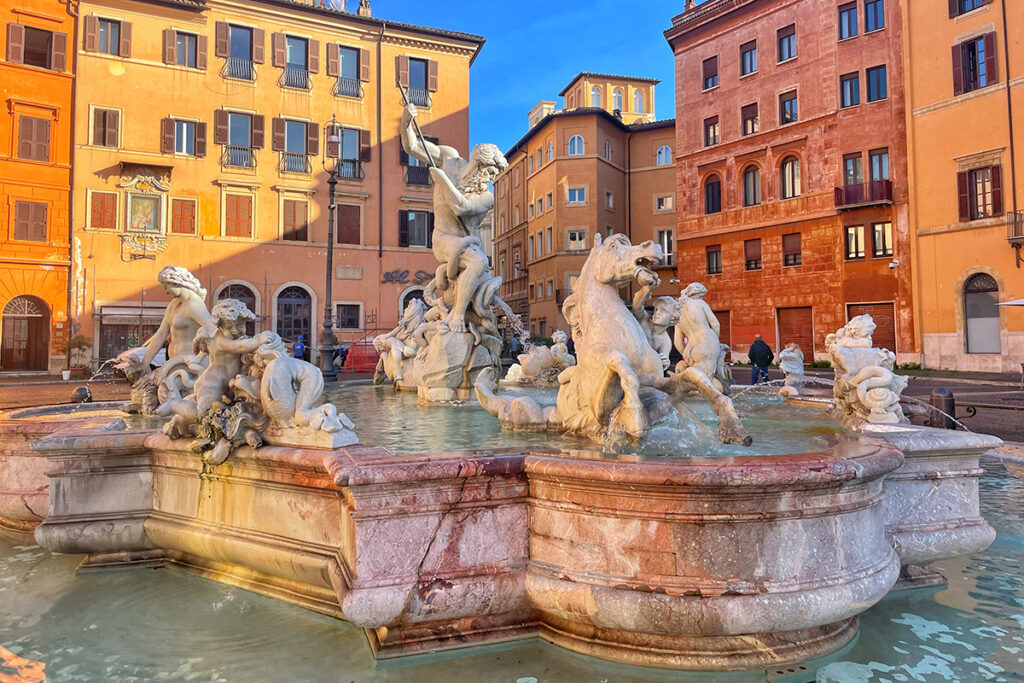
Just a short stroll from the Pantheon is one of Rome’s most beautiful and historic squares – Piazza Navona where you can see three fabulous fountains. And the good news is that Piazza Navona is on the way to the Vatican, so it won’t take you out of your way.
The square started its life as a stadium – Circus Agonalis, which was commissioned by emperor Domitian in 86 AD. After the fall of the Roman Empire, the stadium fell into ruin, the stands were demolished and houses were built in their place. But the elongated arena remained free of buildings.
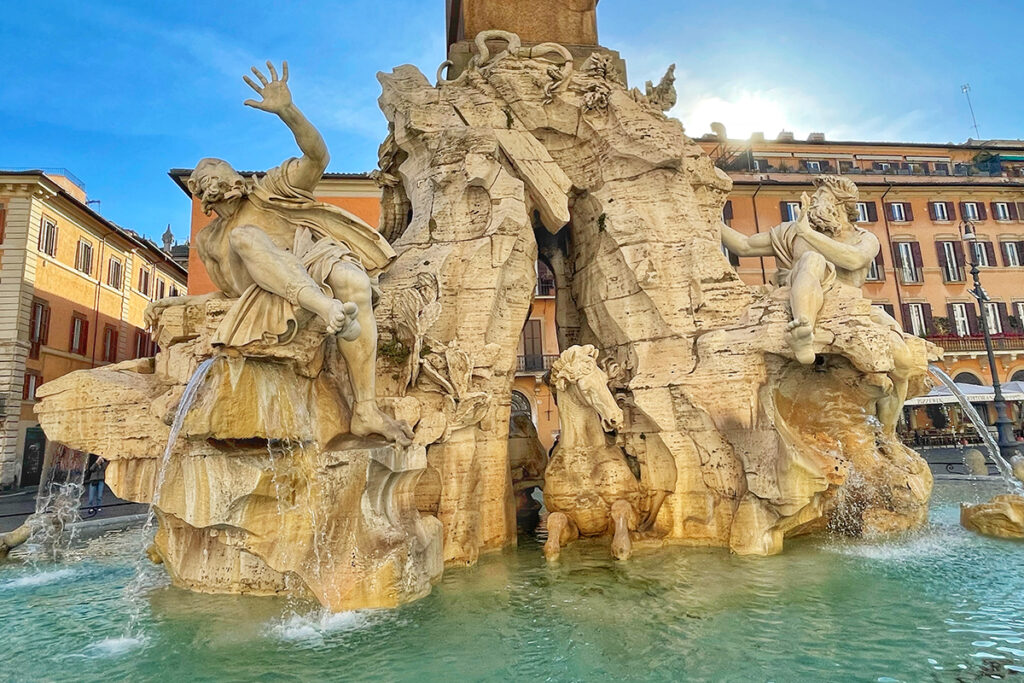
In the 1500s the area became a market square and another century later the fountains were built. The most famous fountain is Fontana dei Quattro Fiumi or the Fountain of the Four Rivers in the centre of the square. Built by Bernini in 1651, the fountain is topped by the 16-meter-high Obelisk of Domitian which he had brought in pieces from the Circus of Maxentius.
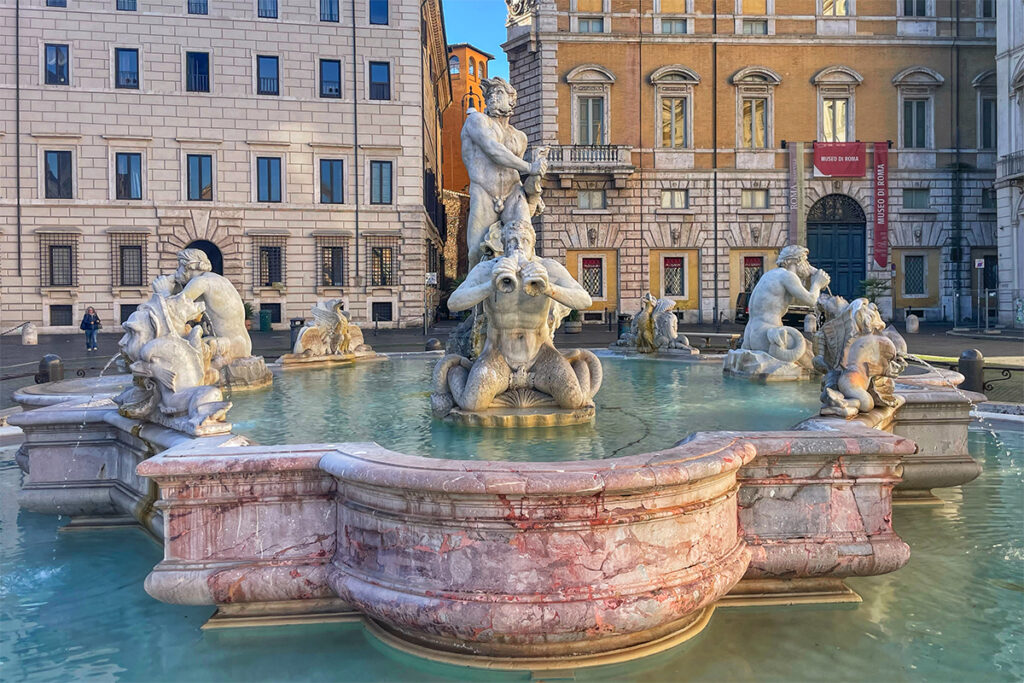
The other two fountains in Piazza Navona are Fontana del Moro (the Fountain of the Moor), and Fontana del Nettuno (Fountain of Neptune) were designed and built by Giacomo della Porta an apprentice of Michelangelo. And as with Trevi Fountain, these three fountains are fed by one of the eleven Roman aqueducts that supplied the city with fresh water.
Optional: Pinacoteca Vaticana
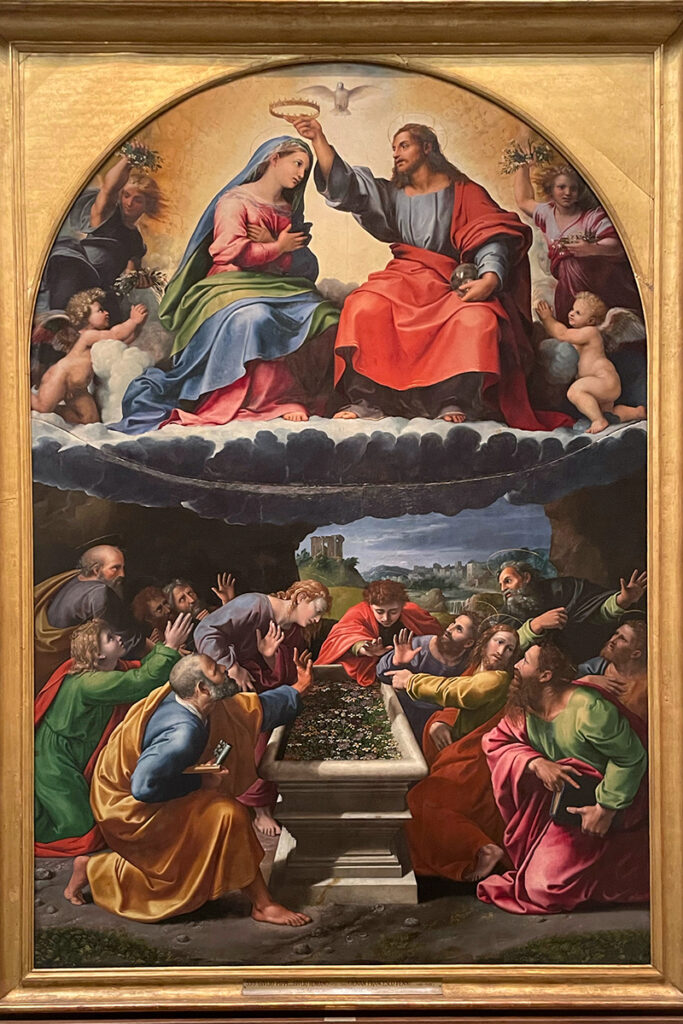
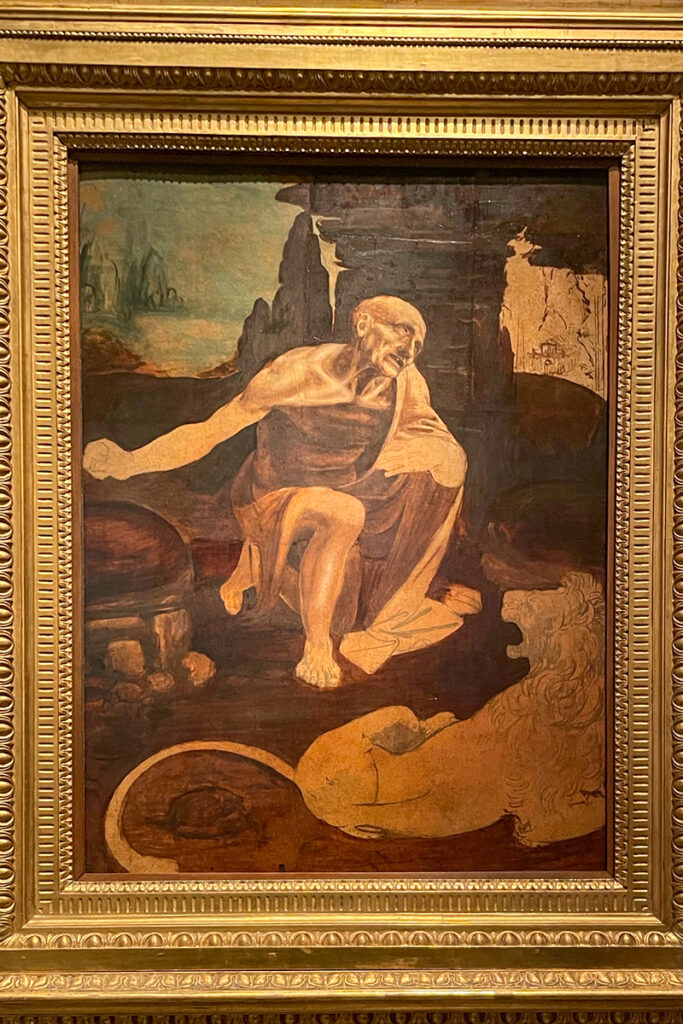
If you are an art buff, you may want to visit Pinacoteca Gallery, which is not included in the Vatican Museums tour. The gallery hosts one of the finest art collections in the world including Leonardo da Vinci’s Saint Jerome in the Wilderness and a stunning collection of Rafael’s paintings.
Unfortunately, there are no separate tickets for Pinacoteca, so you’ll need to purchase the full entry ticket for it. Here is the best way to fit a visit to Pinacoteca in your Rome in a day adventure.
Buy your entry ticket from Headout Tours where you can select an escorted entry. Make your way to the Head Out office and be escorted past the confusing mile-long queues straight into the museum lobby. Book your Pinacoteca visit for 1 or 1.5 hours before the start of your Vatican Museums tour. Then after visiting the gallery, go to the ticket office, exchange your electronic tour booking for a paper ticket and meet your tour guide in the designated spot. You’ll save a lot of time by not having to look for the right queue and line up for entry.
The Vatican Museums & Sistine Chapel
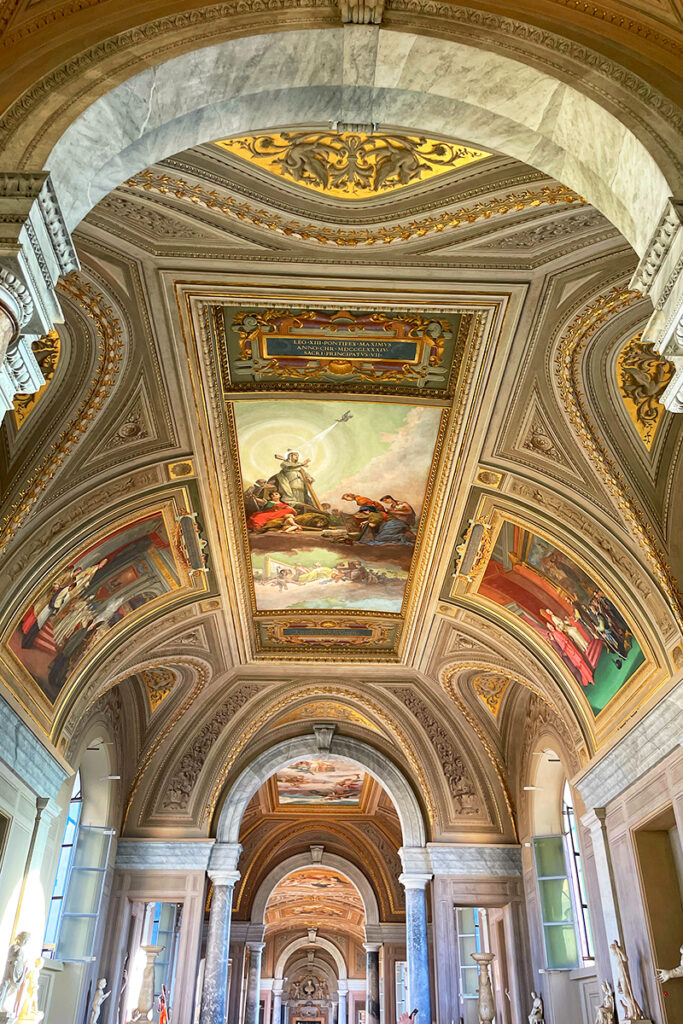
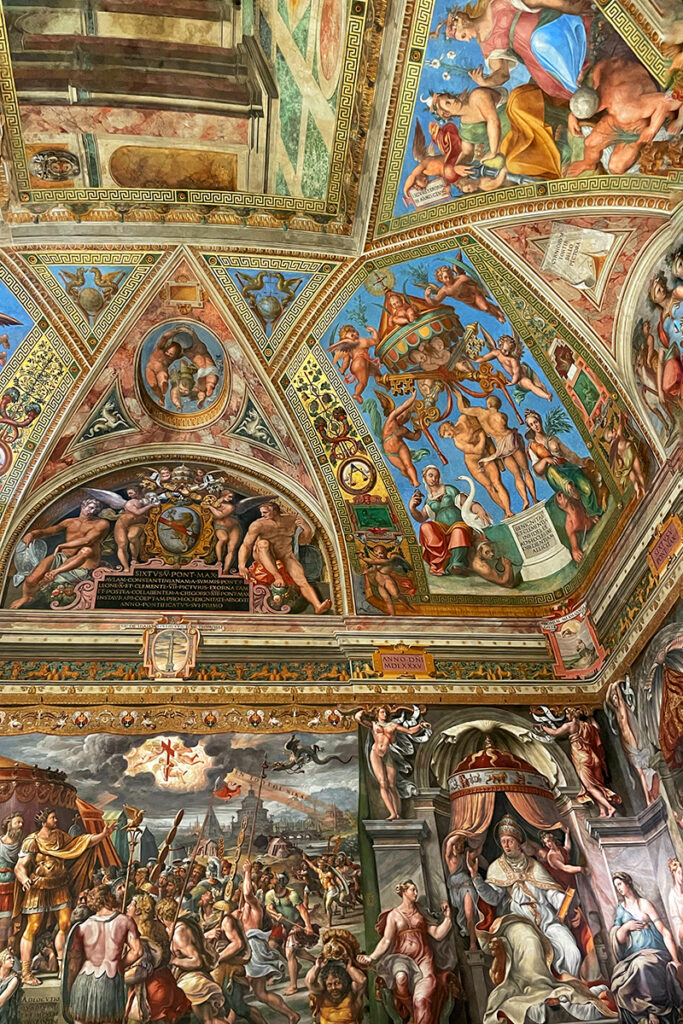
The first thing to know about the Vatican Museums is that the complex is enormous and once you enter the main section, the flow of traffic is one way. The museums are laid out as two long corridors that run parallel to each other with the Sistine Chapel in between the two corridors at the far end, effectively halfway through your visit.
The next thing to know is that the museums are packed. But you can avoid most of the crowds by booking either a late afternoon tour that brings you to the Sistine Chapel after the museum has closed to the general public or a night tour that lets you escape the crowds entirely. The only thing you have to decide is how long you want your day to be.
The late afternoon tour is the official tour run by the Vatican. It is called the Extra Time tour (referring to the time you can remain in the Sistine Chapel once all the other visitors are gone) and it starts at 3.45 pm. The tour last about 2 hours followed by aperitivo in the Vatican courtyard restaurant.
The night tour is offered by third-party providers. It usually starts around 7 pm and goes for 2.5 hours.
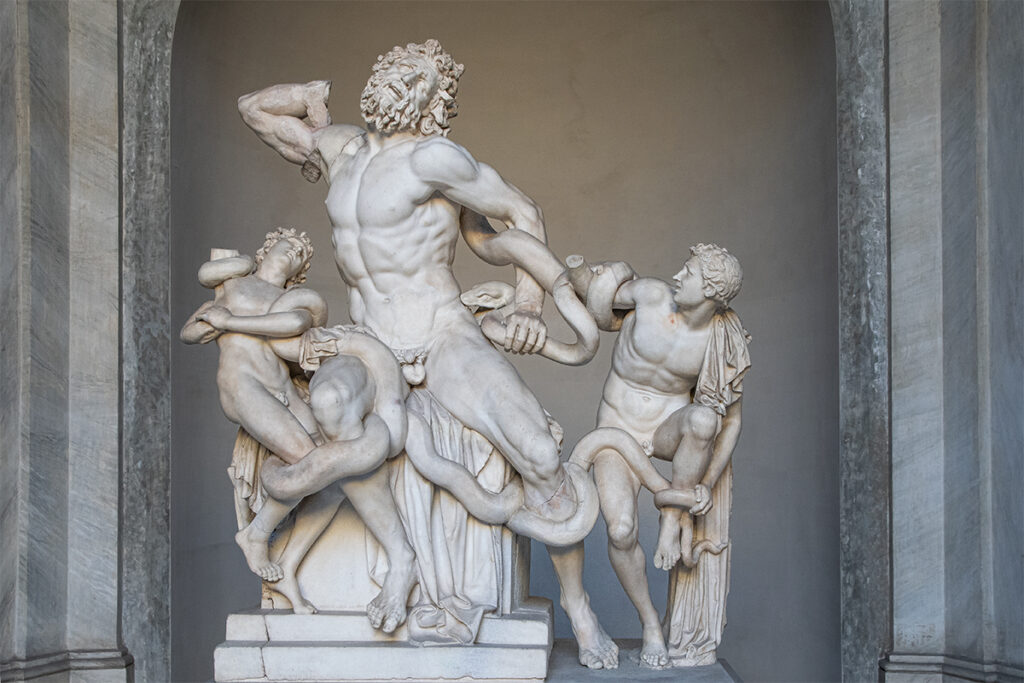
I took the late afternoon tour and by the time we reached the jaw-dropping Rafael Rooms, the security guards were already escorting the last lingering visitors out of the museum.
And trust me, you’ll want to see the Rafael Rooms without the crowds, they are as spectacular as the Sistine Chapel. In fact, Rafael worked on these rooms (the pope’s private apartments) at the same time when Michelangelo was painting the ceiling of the Sistine Chapel.
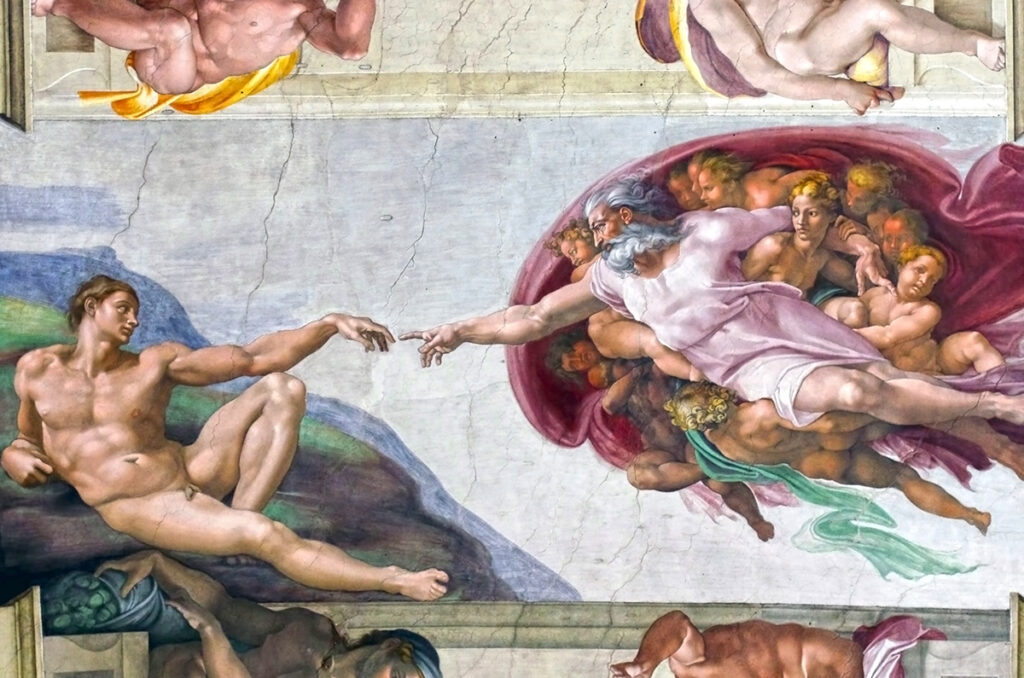
The Sistine Chapel is a marvel. Especially if you can sit on a bench in the practically deserted chapel and see the entire room at once (rather than looking at a sea of people). As you marvel at the ceiling, keep in mind that Michelangelo had single-handedly painted the entire 40-meter-long ceiling in just 4 years. He later returned to paint the Last Judgement behind the altar.
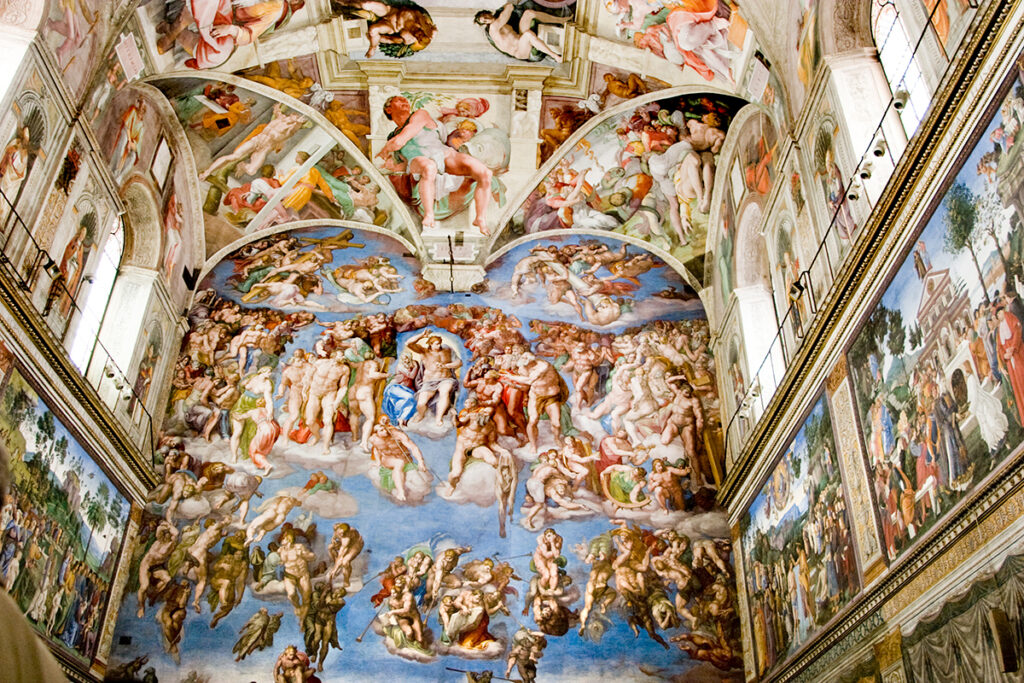
Photography of any kind is not currently allowed in the Sistine Chapel, so here is an image of Michelangelo’s most famous fresco, the Creation of Adam, from Wikipedia.
Another perk of visiting the museum after hours is that you’ll have the famous Bramante Staircase to yourself.
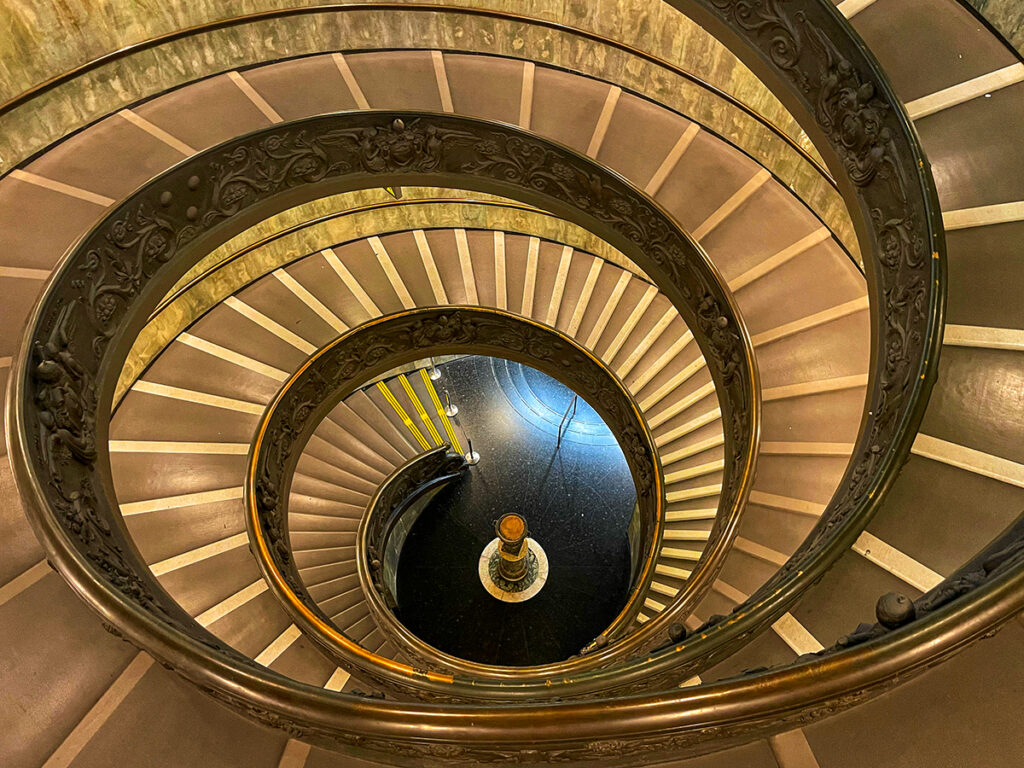
If you visit on the late afternoon tour, you are treated to a glass of wine and apperitivo after your visit and they serve quite a lot of food. So you won’t leave hungry.
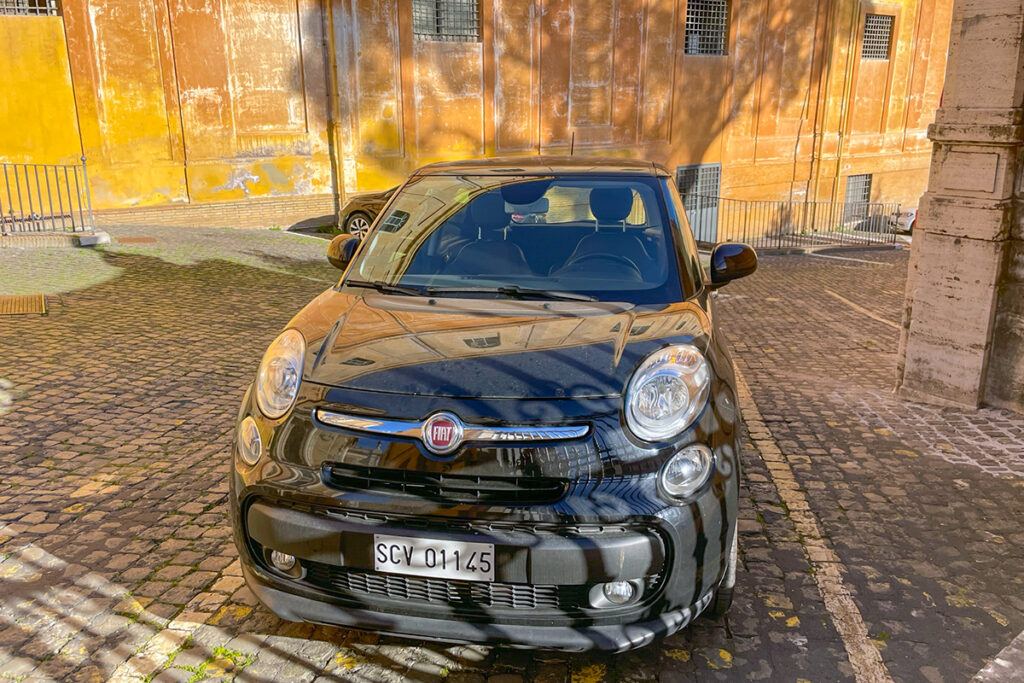
What a way to finish your explorations of the iconic sites of Rome in a day! From the Vatican, you can either catch an Uber to your hotel, or if you still have some energy left, take a stroll to the river, pick a restaurant for dinner, and enjoy the ambience of Rome at night.
More on Exploring Italy
- Renaissance Cats in Florence – A Feline Lovers Guide to Florentine Renaissance Art
- 3 Days in Florence – Exploring the Cradle of the Renaissance
- 2 Days in Florence: Detailed and Flexible Itinerary & Tips
- 1 Day in Florence Itinerary – the Best of the Italian Renaissance
- Things to Do in Florence in Winter and Why Visit in Winter
- Leonardo da Vinci in Florence: In the Footsteps of the Renaissance Master
- Guide to Visiting Palazzo Vecchio: Must-see Art and Hidden Gems
- Medici Florence – a Self-Guided Walk in the Cradle of the Renaissance
- 18 Weekend Breaks in Italy: Top Destinations to Visit and Things to Do
- Quo Vadis – Assisi B&B Where Comfort Meets Medieval Charm

